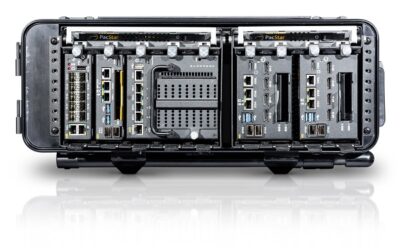AAV & ACV complementary capabilities
“The thing to really bear in mind is that the AAV (Amphibious Assault Vehicle) and ACV (Amphibious Combat Vehicle) are really complementary capabilities,” Colonel Wendell Leimbach, the US Marine Corps’ Deputy Program Manager for Advanced Amphibious Assault, told Mönch in an exclusive interview. Of significance, AAV will remain in the service until the 2035 timeframe. The current generation of AAV is labeled Reliability, Availability, Maintainability/Rebuild to Standard (RAM/RS). “This was originally fielded to the Marine Corps back in the early 1970s – so it is ‘long in the tooth’ when compared to other combat vehicles in the world. We have found the basic design of the AAV does take modifications extremely well and the metallurgy of the hull structure has basically an indefinite life cycle – as long as we continue to maintain and provide preventive maintenance to it.”
The AAV fleet is moving into the current phase of the programme of record, the Survivability Upgrade (SU) programme. The service’s experience on the battlefields of Iraq and Afghanistan, provided a life-and-death case to upgrade the fundamental armour solution on the bottom of the vehicle in order to make the AAV relevant on the modern battlefield. SAIC is the AAV SU programme prime contractor, together with ST Kinetics. “They have to date [April 5] delivered 10 EMD [engineering & manufacturing development] prototypes for that program and are currently in developmental testing with those prototypes at various locations around the US.”
Beyond SU, the service has other projects in force to address obsolescence issues beyond the SU activities. The Marine Corps has three additional areas of focus for the legacy AAV force: electrical, automatic fire suppression and a potential to upgrade the weapon station. The electrical upgrade is funded for those vehicles (about one-third of the fleet) obtaining the SU work, with SAIC as the industry lead for these activities; the automatic fire suppression system is also funded, with work being led by Kidde. “The modification to the weapon station is a requirement that has yet to be finalized and has not been formally funded.”
The USMC ACV programme has two phases, 1.1 and 1.2. ACV 1.1 is in its EMD phase with SAIC and BAE Systems under contract to each deliver 16 prototype vehicles. The service is accepting delivery of vehicles from both vendors, with vehicles undergoing developmental testing at sites around the US. “About ‘5ish’ vehicles have been delivered by both teams as of today,” Leimbach said.
The ACV 1.1 has several requirements that vary between the phase threshold and objective. “The point being, that threshold swim capability required for the 1.1 programme does not require that vehicle to self-deploy from a ship. It does require it to have a robust swim capability such that it can swim in the open ocean and go through the surf zone so that we can operate very safely in the littoral region. The objective level of the 1.1 requirement is that the vehicle be able to deploy from a ship. That is important because of the relationship between the 1.1 requirement and 1.2 requirement. The 1.2 programme is conceived at this point to be a ‘flow’ right out of 1.1 into production for 1.2 if the 1.1 vehicles are able to swim toward that objective level, which is to be able to swim from a ship.”
This flow rate was built into the programme, and 1.1 in particular, since speed of acquisition is key for ACV. Indeed, the government incentivized the contractors to put in this robust swim capability in their 1.1 offerings so that they can approach that 1.1 objective level swim capability, which the service views as the threshold swim capability for 1.2. The 1.1 efforts are further focused on delivering a “P” (personnel) variant, whereas a command and control variant and recovery variant will also be delivered in 1.2, and dealt with as separate subprogrammes. Following the completion of 1.1, “there is no intention of reopening the competition for 1.2,” Leimbach again emphasised.
While there are no formal 1.2 acquisition strategy and path forward, the intention is that about 95% of the 1.1 vehicle will meet the 1.2 requirements in order to make to make the 1.2 programme a low-risk, speedy acquisition effort. “The Program of Record is to receive 204 vehicles. The down select, acquisition Milestone C for 1.1, is scheduled for late summer 2018, and initial operational capability planned for 2020,” said the service colonel.
Marty Kauchak
























